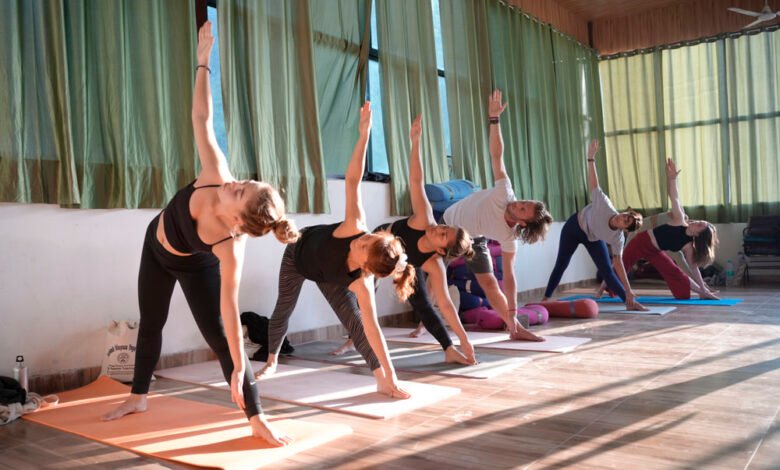
Kundalini Yoga is often celebrated as a powerful spiritual practice, capable of awakening deep energies within the body and mind. However, alongside its potential benefits, many practitioners and experts warn about the inherent risks associated with this ancient practice. So, why is Kundalini Yoga dangerous? This article explores the reasons behind these concerns, providing insights into the potential hazards and how to approach Kundalini Yoga with caution.
Understanding Kundalini Yoga
Kundalini Yoga is not just a physical exercise; it’s a comprehensive practice that involves breath control, meditation, chanting, and specific poses designed to awaken the Kundalini energy. This energy, often depicted as a coiled serpent at the base of the spine, is believed to rise through the chakras, leading to spiritual enlightenment. However, this awakening process is not without risks.
The Dangers of Premature Kundalini Awakening
One of the primary reasons why Kundalini Yoga is dangerous lies in the premature awakening of the Kundalini energy. When this energy is activated too quickly or without proper guidance, it can lead to a range of physical, emotional, and psychological issues. Practitioners might experience intense emotional upheavals, anxiety, or even psychosis. The body and mind may not be prepared to handle the surge of energy, leading to disorientation and distress.
Physical Risks of Kundalini Yoga
Kundalini Yoga involves specific poses and breathing techniques that are designed to stimulate the nervous system and chakras. While these practices can be beneficial when done correctly, they also pose physical risks if performed improperly or without adequate preparation. Some common physical dangers include:
- Injury from Advanced Poses: Certain poses in Kundalini Yoga are physically demanding and can lead to muscle strains, joint injuries, or even spinal problems if not performed correctly.
- Breath Control Issues: Kundalini Yoga places a strong emphasis on pranayama (breath control), which can be dangerous if not practiced under proper supervision. Incorrect breathing techniques can lead to dizziness, hyperventilation, or respiratory issues.
Psychological and Emotional Dangers
Another critical aspect of why Kundalini Yoga is dangerous involves the psychological and emotional impact. The awakening of Kundalini energy can bring suppressed emotions and traumas to the surface, which can be overwhelming for unprepared practitioners. The following psychological and emotional risks are commonly reported:
- Emotional Overload: As Kundalini energy rises, it can trigger intense emotions, leading to feelings of fear, anger, or sadness. This emotional overload can be challenging to manage without proper guidance and support.
- Psychosis and Mental Instability: In extreme cases, the awakening process can lead to psychosis or other severe mental health issues. Individuals with a history of mental health problems are particularly vulnerable and should approach Kundalini Yoga with caution.
Spiritual Bypassing and Ego Inflation
Kundalini Yoga is often associated with rapid spiritual growth, but this can lead to a phenomenon known as spiritual bypassing. This occurs when individuals use spiritual practices to avoid facing unresolved psychological issues or traumas. Additionally, the experience of awakening can sometimes inflate the ego, leading practitioners to believe they have reached a higher state of consciousness when, in reality, they are avoiding deeper personal work.
The Importance of Proper Guidance
Given the potential dangers, one might wonder why is Kundalini Yoga dangerous if practiced without guidance. The answer lies in the complexity and intensity of the practice. Kundalini Yoga is not a casual exercise; it requires a deep understanding of the body, mind, and energy systems. Practicing under the supervision of an experienced teacher is crucial to navigate the challenges and avoid the pitfalls associated with this powerful practice.
How to Practice Kundalini Yoga Safely
If you’re drawn to Kundalini Yoga despite the risks, it’s essential to take steps to practice safely:
- Seek an Experienced Teacher: Find a qualified instructor who understands the intricacies of Kundalini Yoga and can provide personalized guidance.
- Start Slowly: Don’t rush the process. Begin with basic poses and breathing exercises, gradually building up your practice as you become more comfortable.
- Listen to Your Body: Pay attention to how your body and mind react to the practice. If you experience any discomfort or distress, stop immediately and seek guidance.
- Prioritize Mental Health: If you have a history of mental health issues, consult a healthcare professional before beginning Kundalini Yoga. Ensure that your practice supports your overall well-being.
Conclusion: Balancing the Risks and Rewards
So, why is Kundalini Yoga dangerous? The answer lies in the powerful and transformative nature of the practice. While it offers profound benefits for spiritual growth, the risks are equally significant, particularly for those who approach it without proper preparation or guidance. By understanding the potential dangers and taking steps to practice safely, you can navigate the challenges of Kundalini Yoga and unlock its full potential while safeguarding your physical, emotional, and psychological well-being.


